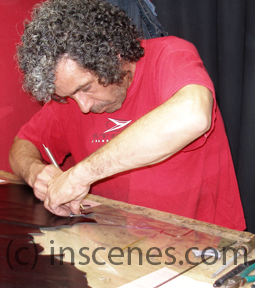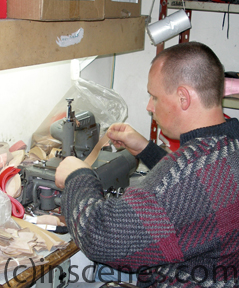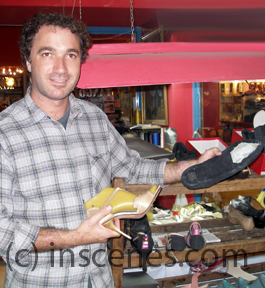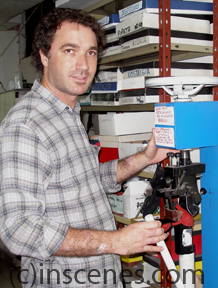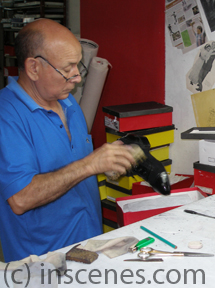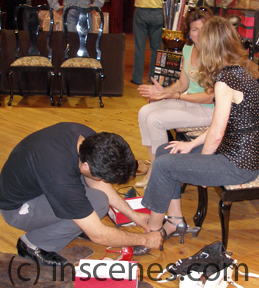There are many benefits to dancing Tango including the dance, the music, the people, travel,
and of course the cool Tango shoes! If you've ever seen one of the popular Tango shows such
as "Forever Tango", attended a local milonga (a public Tango dance party), or have been
fortunate enough to travel to Buenos Aires to see any of the many Tango shows or milongas
there, you will see first hand how cool Tango shoes are. Both women and men have a great
variety of beautiful and sexy shoes from which to choose. Shoes of all styles, size, colors,
strap type, heel shape and size are available--shoes made from a variety of materials such as
leather, suede leather, nubuck leather, textured leather, patent leather, stamped leather,
vinyl, velvet, satin, mesh and glitter cloth as well as a choice of colors including black,
brown, white, silver, tan, gold, red, orange, blue, copper, nude, and green.
For the last six years or so, I've conducted Tango tours to Buenos Aires. On these trips, one
important activity, and one I always look forward to, is escorting the tour participants to Tango
dance-shoe stores since having at least one pair of stylish, high quality, comfortable
dance shoes is an important ingredient for a totally satisfying Tango experience. At the shoe store
we tend to load up on custom shoes since the styles are fun, quality is generally high, and prices are great.
Custom shoes are also important if a special fitting or style is needed.
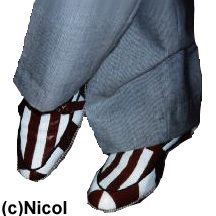
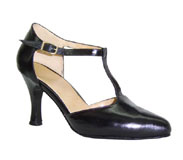
During these trips, I've also made visits to different shoemakers to see how their custom dance shoes are made. For the most part, the process different shoemakers use is very similar and can be described in general by the following steps: 1. Measure and trace each foot. 2. Select a shoe style. 3. Select a heel type and size. 4. Select a trim and strap type. 5. Select a shoe body leather and color. 6. Select a sole leather. 7. Get a pre-final-assembly fitting. 8. Get the final fitting and, if necessary, make minor adjustments such as adding additional strap holes or changing the strap length.
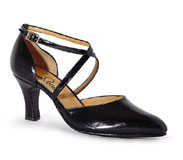
Here are a few tips about shoe selection: Aside from style and comfort, insist on a totally leather shoe, including the lining and insert. Insist on a sturdy connection of heel to shoe body using a steel plated arch support. If you dance at many venues and you can afford it, buy two or three pairs of shoes each with a different type of sole. Then select the shoes that work the best for the particular floor on which you will be dancing. This will help you dance with confidence and comfort. Remember Tango is not only danced around the world but also on just about any floor surface you can imagine including wood slat, wood parquet, wood composite, tile, vinyl, cement, marble, and even asphalt. Each one of these surfaces has its own particular characteristics. For example, at one popular milonga in Buenos Aires, the floor is marble and white powder is put on the floor, leaving the floor potentially very slippery. If you are not sure about the venue dance surface, bring a backup pair of dance shoes.
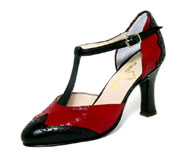
Dance shoes should fit snugly without pinching or hurting for good balance, poise, and comfort.
A dance shoe will wear faster if the foot can move inside the shoe. It will also degrade the dancer's
balance and control. In close-toe shoe style for either men or women, the toes should come close to
the end of the shoe without touching or rubbing it. In a sandal-style shoe, the top tip should go to
the end of the shoe sole but not over it to protect the toes from pain or damage due to toe-tap
embellishments. Never let your foot stretch out the shoe, no matter what the sales person says. If
the shoes are too tight at first, don't panic. Take them to a shoemaker to be stretched for a snug fit.
A good shoemaker will give you sound advice about the stretching process.
After you get your beautiful, new and (time) expensive dance shoes, here's a quick note about shoe maintenance:
Remember that water, street oil and dirt are the bane of expensive dance shoes. Don't wear your good dance shoes
outdoors. Wear your street shoes or a pair of dance shoes that have seen their day, otherwise, use a shoe bag
for your good dance shoes. Brush or polish your shoes to keep them looking good and to keep the
leather from cracking. Brush the soles during and after dancing to remove floor powder, dirt, wax, and
resin build up. For patent leather, use a shoe polish or silicon oil (not a petroleum-based vaseline) to keep them
from sticking together while dancing. I have also learned how to make some minor dance shoe repairs
which saves a few of my students and me some time and money and keeps a pair or two of my favorite
dance shoes on the dance floor.

One last note: It is especially important for beginning students to get a good pair of dance shoes sooner rather than later so that poor balance, posture, and control habits resulting from poor shoes are minimized. Tango is hard enough to learn without having to deal with the wrong equipment. To encourage students to get a good pair of dance shoes, I provide my students with a free custom pair of dance shoes as an option with their dance lessons. This way I have one less problem to deal with, which can potentially slow student progress. You also feel more like a dancer with cool shoes and after all, in the end, we all know that it's all about the shoes! (tic)
